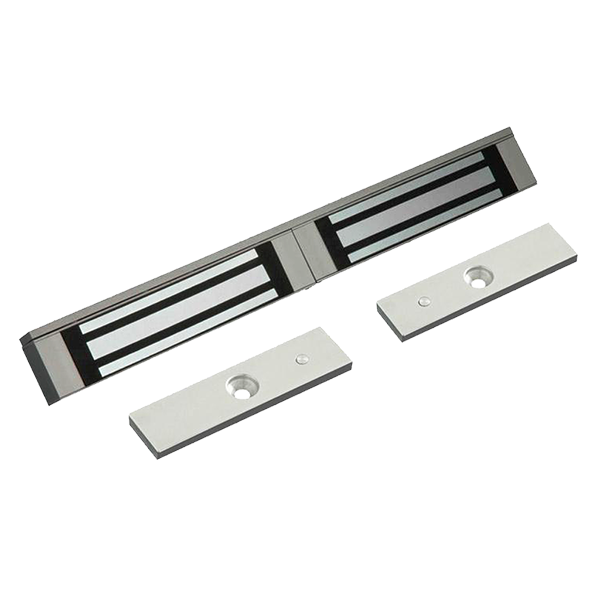Electromagnetic Locks
Electromagnetic locks, also known as maglocks, are security devices widely used in various applications to provide reliable and efficient access control. These locks utilize the principles of electromagnetism to secure doors and gates, making them a popular choice in commercial buildings, airports, government facilities, and other high-security environments.
The basic structure of an electromagnetic lock consists of two main components: an electromagnet and an armature plate. The electromagnet is typically mounted on the door frame, while the armature plate is affixed to the door itself. When the lock is engaged, an electric current passes through the electromagnet, creating a strong magnetic field. This magnetic force attracts the armature plate, securely locking the door.
One of the key advantages of electromagnetic locks is their holding force. These locks are capable of providing high levels of security, with holding forces ranging from a few hundred pounds to several thousand pounds. This makes them an effective deterrent against unauthorized entry and provides peace of mind for building owners and occupants.
Another benefit of electromagnetic locks is their fail-safe operation. In the event of a power failure or emergency, the locks are designed to release and allow for easy egress. This ensures the safety of individuals inside the building, as they can quickly exit without the need for additional hardware or manual unlocking.
Electromagnetic locks are also known for their ease of installation and compatibility with different door types. They can be installed on both inward and outward swinging doors, as well as single and double doors. Additionally, these locks can be integrated with access control systems, keypads, or card readers, allowing for convenient and flexible access management.
However, it’s important to note that electromagnetic locks are not suitable for all scenarios. They are typically used for indoor applications and may not be ideal for outdoor use due to exposure to weather conditions. Additionally, maglocks require a constant power supply to remain engaged, so backup power sources or battery backups should be considered to ensure continuous operation during power outages.
In conclusion, electromagnetic locks are versatile, robust, and reliable security devices widely employed in various settings. Their strong holding force, fail-safe operation, and compatibility with access control systems make them an effective choice for securing doors and gates. However, proper installation, maintenance, and consideration of power backup solutions are essential to maximize their effectiveness and ensure the safety of the premises and its occupants.
